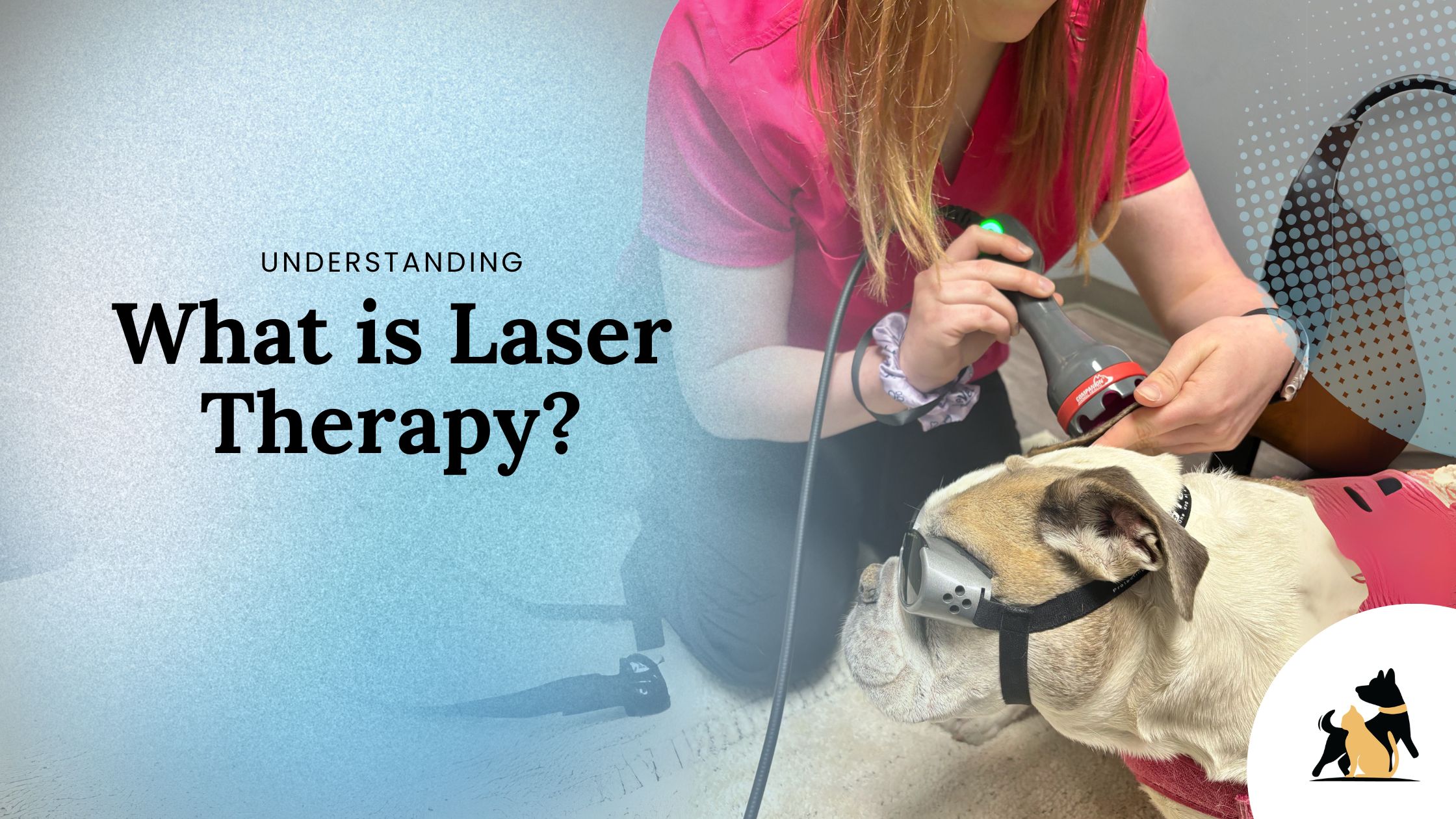What is Laser Therapy?
How Does Laser Therapy Work?
- Stimulating Cellular Function: Light photons penetrate the skin and are absorbed by the mitochondria, the energy-producing structures within cells. This enhances the production of adenosine triphosphate (ATP), the energy currency of the cell, promoting cellular repair and regeneration.
- Reducing Inflammation: The therapy modulates inflammatory pathways, reducing the production of pro-inflammatory cytokines and increasing anti-inflammatory cytokines. This helps in controlling inflammation and associated pain.
- Enhancing Blood Flow: PBM therapy promotes vasodilation, which improves blood circulation. Increased blood flow brings more oxygen and nutrients to the affected area, accelerating the healing process.
- Relieving Pain: The therapy has an analgesic effect, reducing pain by decreasing nerve sensitivity and promoting the release of endorphins, the body’s natural painkillers.
Uses of Laser Therapy for Pets
- Arthritis: Reduces inflammation and pain, improves joint mobility.
- Soft Tissue Injuries: Accelerates the healing of muscle strains, ligament sprains, and tendon injuries.
- Post-Surgical Recovery: Promotes faster healing and reduces post-operative pain and inflammation.
- Chronic Pain: Manages pain associated with conditions like hip dysplasia and degenerative joint disease.
- Wound Healing: Enhances the healing of surgical incisions, cuts, abrasions, and burns.
- Neurological Conditions: Assists in the recovery of nerve injuries and conditions like intervertebral disc disease.
- Dental Issues: Aids in the treatment of gingivitis, stomatitis, and oral ulcers.
Benefits of Laser Therapy for Pets
- Non-Invasive and Painless: The therapy is completely non-invasive and painless, making it suitable for pets of all ages and conditions.
- No Side Effects: Unlike medications, PBM therapy has no known side effects, making it a safe treatment option.
- Quick and Efficient: Treatment sessions are typically short, often lasting between 5 to 20 minutes, depending on the condition being treated.
- Enhances Quality of Life: By reducing pain and promoting healing, PBM therapy can significantly improve your pet’s quality of life, allowing them to enjoy their daily activities with more comfort and ease.
- Complementary Treatment: It can be used alongside other treatments, such as medications and physical therapy, to enhance overall treatment outcomes.
Protecting Your Dog’s Healthy Leg After a CCL Injury
When a dog injures one of their cranial cruciate ligaments (CCL), there’s a 30% to 50% chance the other CCL might also tear in the future. This risk is particularly high within the first few months to a year after the initial injury.
- To help protect the healthy leg and reduce the risk of a contralateral CCL tear, we recommend laser therapy as part of the treatment plan. Laser therapy can:
- Reduce Inflammation: Helps decrease swelling and discomfort in the compensatory leg.
- Enhance Healing: Promotes faster recovery by improving circulation and cellular repair.
- Prevent Further Damage: Supports the healthy leg in coping with the extra strain, potentially reducing the risk of future injury.
- By incorporating laser therapy into your dog’s treatment plan, you can help safeguard their overall joint health and increase their chances of a smoother recovery.
How to Get Laser Therapy for Your Pet
More Resources
Understanding Kennel Cough
What is Kennel Cough? Kennel cough, also known as infectious tracheobronchitis, is a highly contagious respiratory disease in dogs characterized by a persistent cough. The term "tracheobronchitis" refers to the inflammation of the trachea (windpipe) and the bronchial...
How to Prevent Rabies in Dogs and Cats
Rabies is a deadly viral disease that targets the nervous system of mammals, including pets like dogs and cats, as well as humans. Once symptoms develop, rabies is almost always fatal, making it a critical public health concern that has persisted for thousands of...
The Importance and Considerations of Vaccinating Cats
Vaccinating your cat is a critical aspect of responsible pet ownership, ensuring your feline friend stays healthy and protected against various infectious diseases. Here, we will discuss the considerations of vaccinating cats, including the types of vaccines,...




